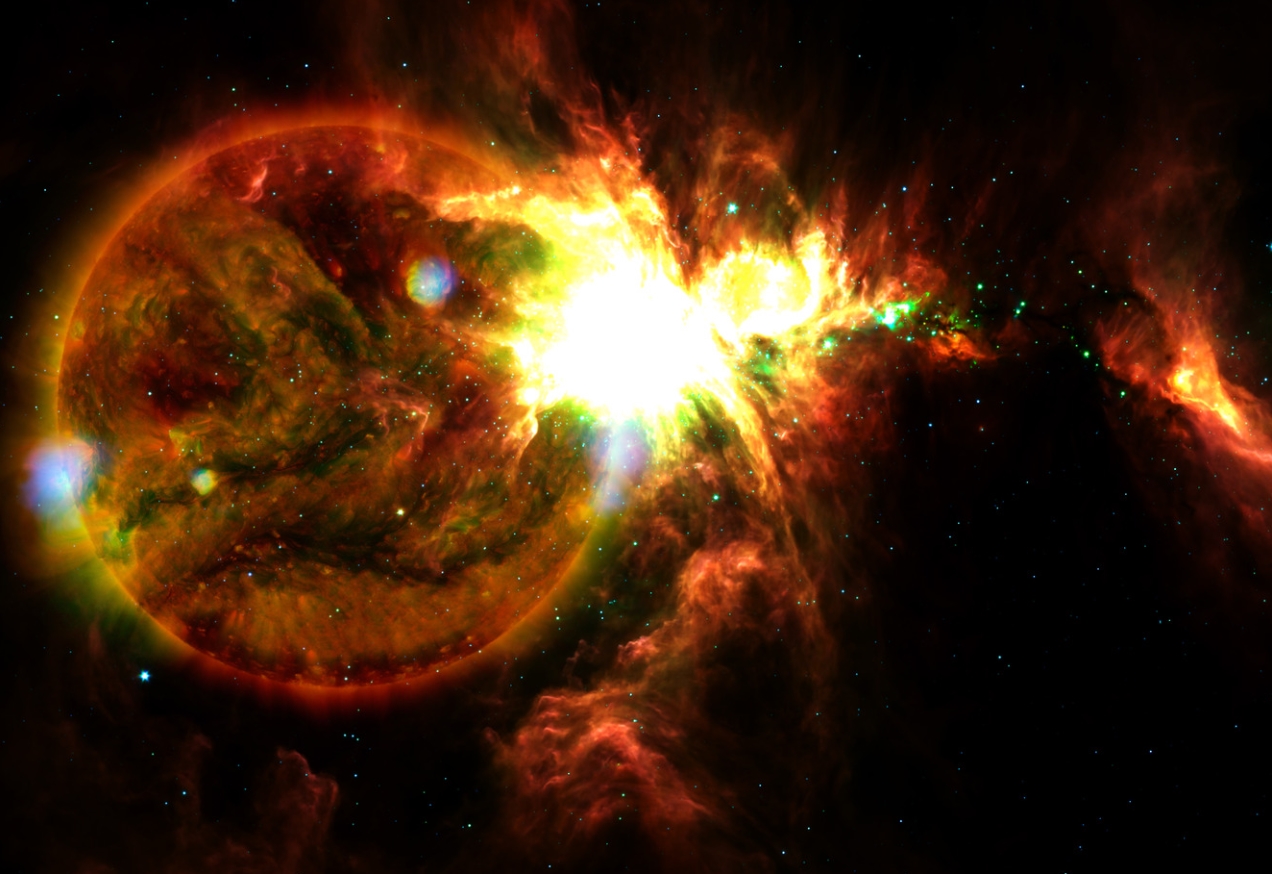Sun Releases Two Powerful Solar Flares, Causes Blackouts
In the past week, the Sun has emitted two significant solar flares from a newly identified sunspot, AR3663, causing impacts such as radio blackouts in several parts of the world. These flares occurred within six hours of each other, signaling an increase in solar activity as part of the Sun’s 11-year magnetic cycle, during which it experiences a polar reversal.
About Solar Flares
Solar flares are powerful bursts of energy emitted from sunspots, which are temporary phenomena on the Sun’s surface. These flares are caused by the sudden release of magnetic energy due to changes in the magnetic field lines near sunspots. The intensity of solar flares is ranked by scientists from the weakest (B-class) to the strongest (X-class).
Impact of Recent Flares
The first of the recent flares, an X-class flare, occurred on May 2 and had significant consequences, including widespread radio blackouts across Australia, Japan, and China. Following closely, an M-class flare struck on May 3. This activity highlights the direct effect such solar phenomena can have on Earth, particularly when the Earth faces the active sunspot.
Effects of Coronal Mass Ejections (CMEs)
Accompanying some solar flares are Coronal Mass Ejections (CMEs) which involve the expulsion of plasma and magnetic fields into space. If directed towards Earth, CMEs can disrupt power grids, telecommunications, and satellite operations. They also pose radiation risks to astronauts in space.
Broader Implications
These solar events underscore the dynamic and interconnected nature of celestial and terrestrial systems. Agencies like NASA continue to monitor solar activity closely to better predict and mitigate the effects of these solar emissions on our technology-dependent society.
About Coronal Mass Ejection (CME)
A Coronal Mass Ejection (CME) is a significant release of plasma and accompanying magnetic field from the Sun’s corona, the outer atmosphere of the Sun. These solar phenomena can eject billions of tons of coronal material into space at speeds ranging from 250 to 3000 kilometers per second. CMEs can influence Earth’s space weather significantly; they can cause solar storms, disrupt satellite operations, induce electrical blackouts, and enhance auroral displays (northern and southern lights). CMEs are monitored closely due to their potential impact on technology and communication systems on Earth.
Magnetic field cycle of the Sun
The Sun’s magnetic field undergoes an approximately 11-year cycle known as the solar cycle. This cycle is characterized by the periodic change in the Sun’s magnetic activity including the emergence and disappearance of sunspots. Sunspots are darker, cooler areas on the Sun’s surface, which correspond with areas of intense magnetic activity. During the cycle, the magnetic field becomes increasingly twisted and tangled, and eventually reverses polarity. This impacts solar radiation and ejection of solar material, influencing space weather and electromagnetic conditions on Earth.
Month: Current Affairs - May, 2024
Category: Science & Technology Current Affairs








